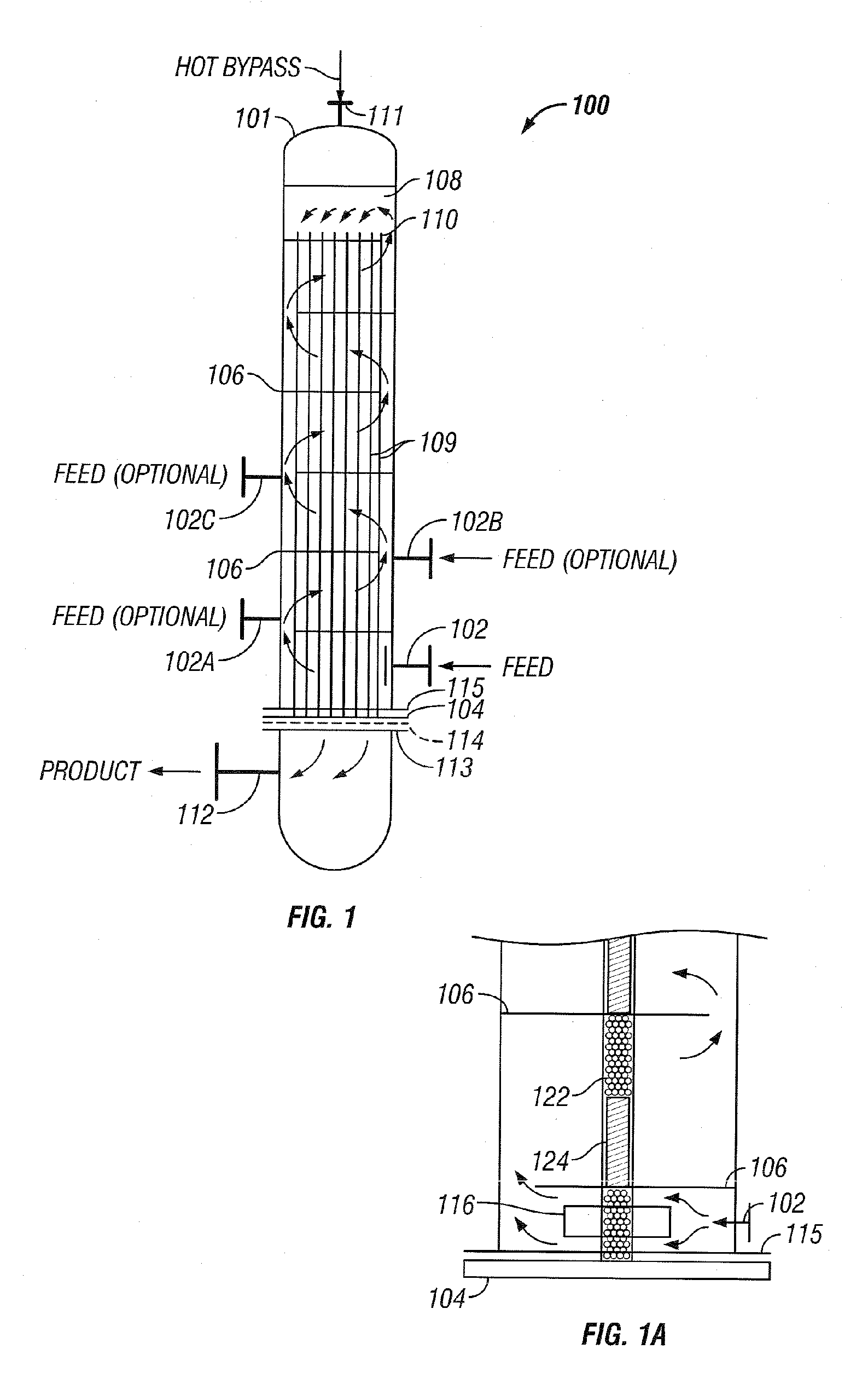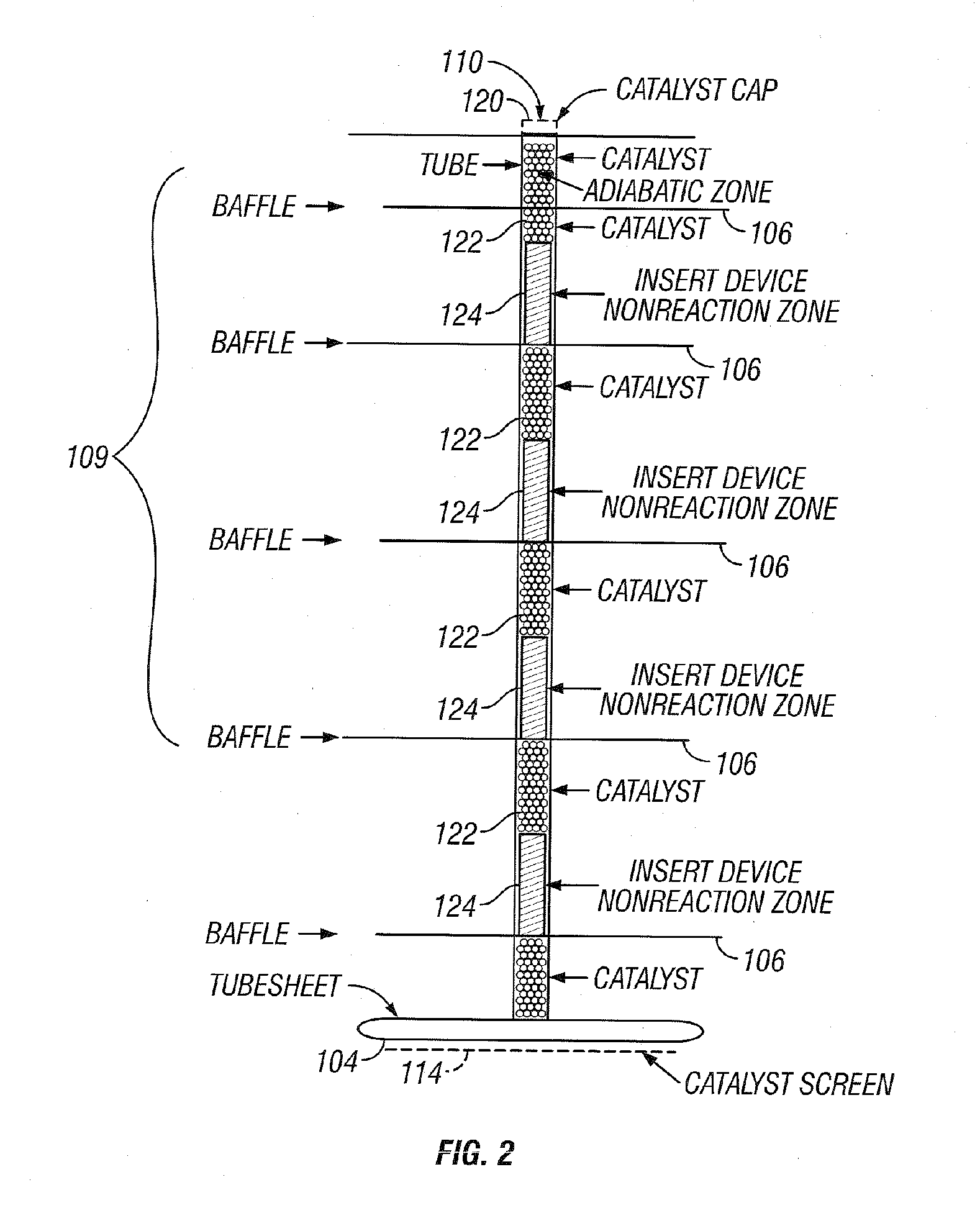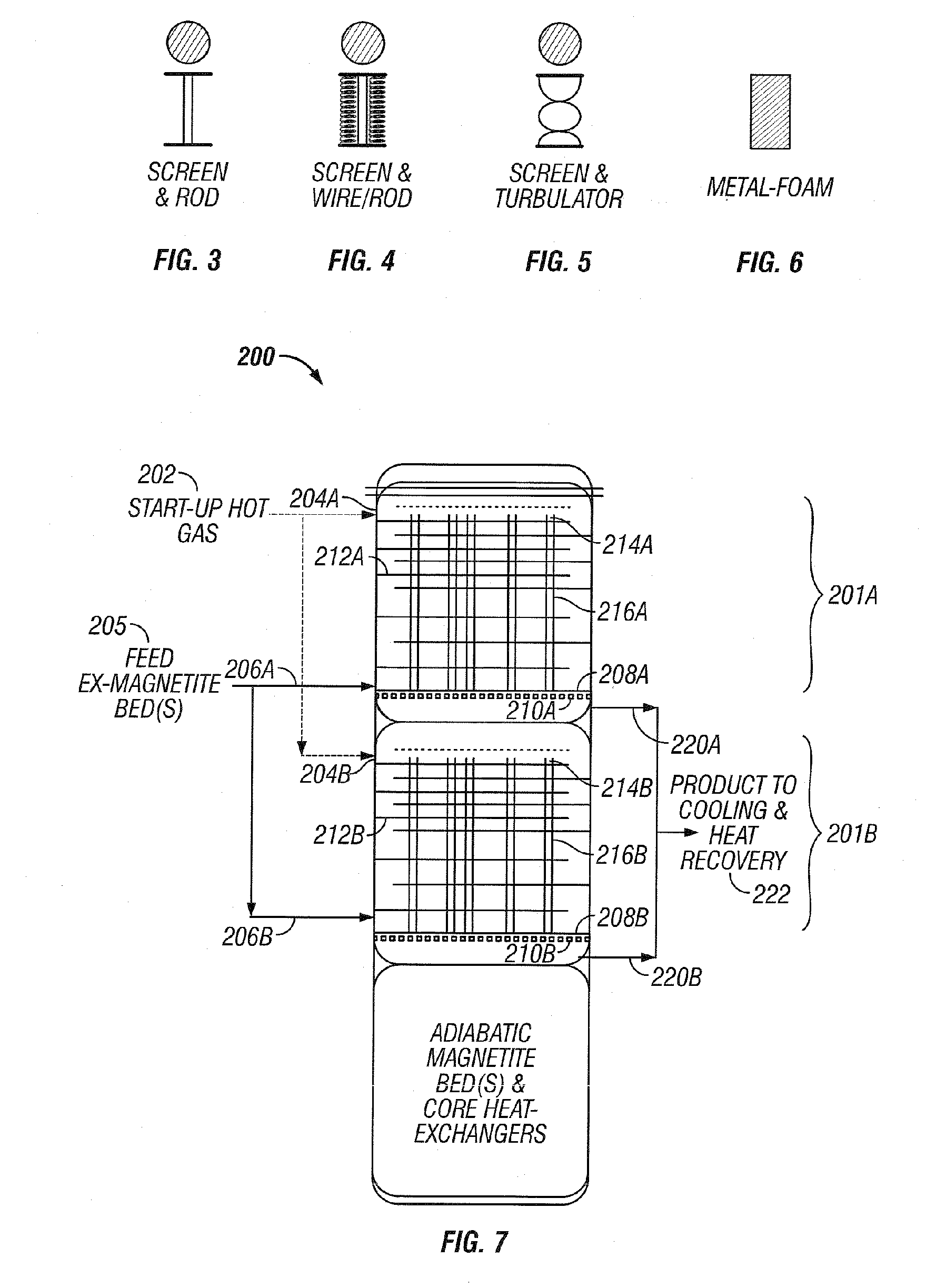Maximum reaction rate converter system for exothermic reactions
a converter system and reaction rate technology, applied in the direction of physical/chemical process catalysts, bulk chemical production, metal/metal-oxide/metal-hydroxide catalysts, etc., can solve the problems of poor production rate, unusable by-product production, deactivation of catalysts, etc., and achieve the effect of increasing conversion and reducing catalyst volum
- Summary
- Abstract
- Description
- Claims
- Application Information
AI Technical Summary
Benefits of technology
Problems solved by technology
Method used
Image
Examples
Embodiment Construction
[0036] The invention will be described by way of examples with reference to FIGS. 1-13 which are not to be construed as a limitation upon the apparatus elements and process steps of the invention. The present invention is directed to a synthesis reactor for exothermic reactions which can better approximate the equilibrium temperature / concentration curve for the conversion of reactants to products. Catalyst usage and reaction yields can be improved over existing isothermal and staged adiabatic reactor processes. The advantages of the present invention are accomplished by withdrawing heat from the catalyst-filled tubes of the converter to maintain the reaction temperature within the bulk of the length of the catalyst-filled tubes close to an optimum. Within this application the terms reactor and converter can be used interchangeably.
[0037] Examples of commercially practiced exothermic-type gas phase catalytic reactions which can be practiced in reactor 100, as depicted in FIG. 1, inc...
PUM
| Property | Measurement | Unit |
|---|---|---|
| equilibrium temperature | aaaaa | aaaaa |
| diameter | aaaaa | aaaaa |
| diameter | aaaaa | aaaaa |
Abstract
Description
Claims
Application Information
 Login to View More
Login to View More - R&D
- Intellectual Property
- Life Sciences
- Materials
- Tech Scout
- Unparalleled Data Quality
- Higher Quality Content
- 60% Fewer Hallucinations
Browse by: Latest US Patents, China's latest patents, Technical Efficacy Thesaurus, Application Domain, Technology Topic, Popular Technical Reports.
© 2025 PatSnap. All rights reserved.Legal|Privacy policy|Modern Slavery Act Transparency Statement|Sitemap|About US| Contact US: help@patsnap.com



